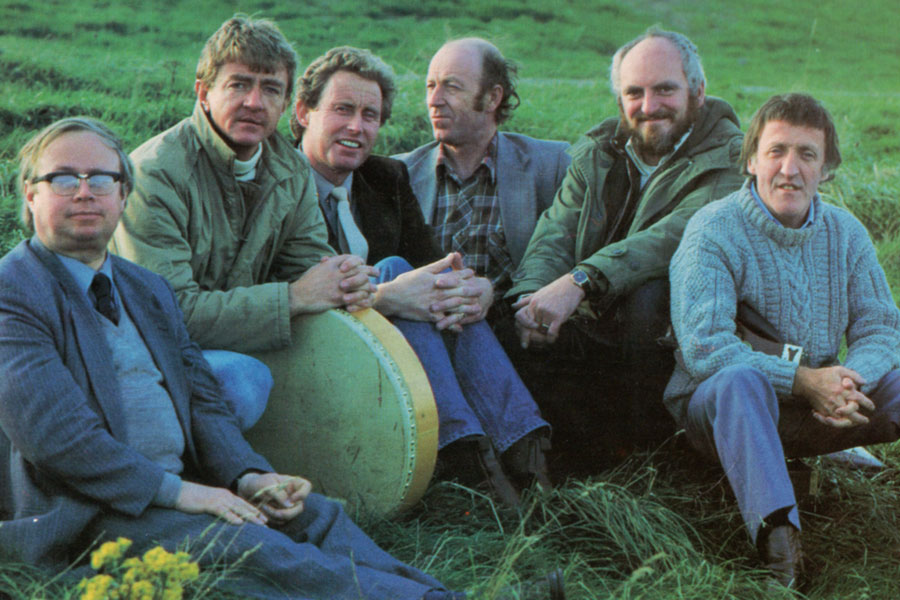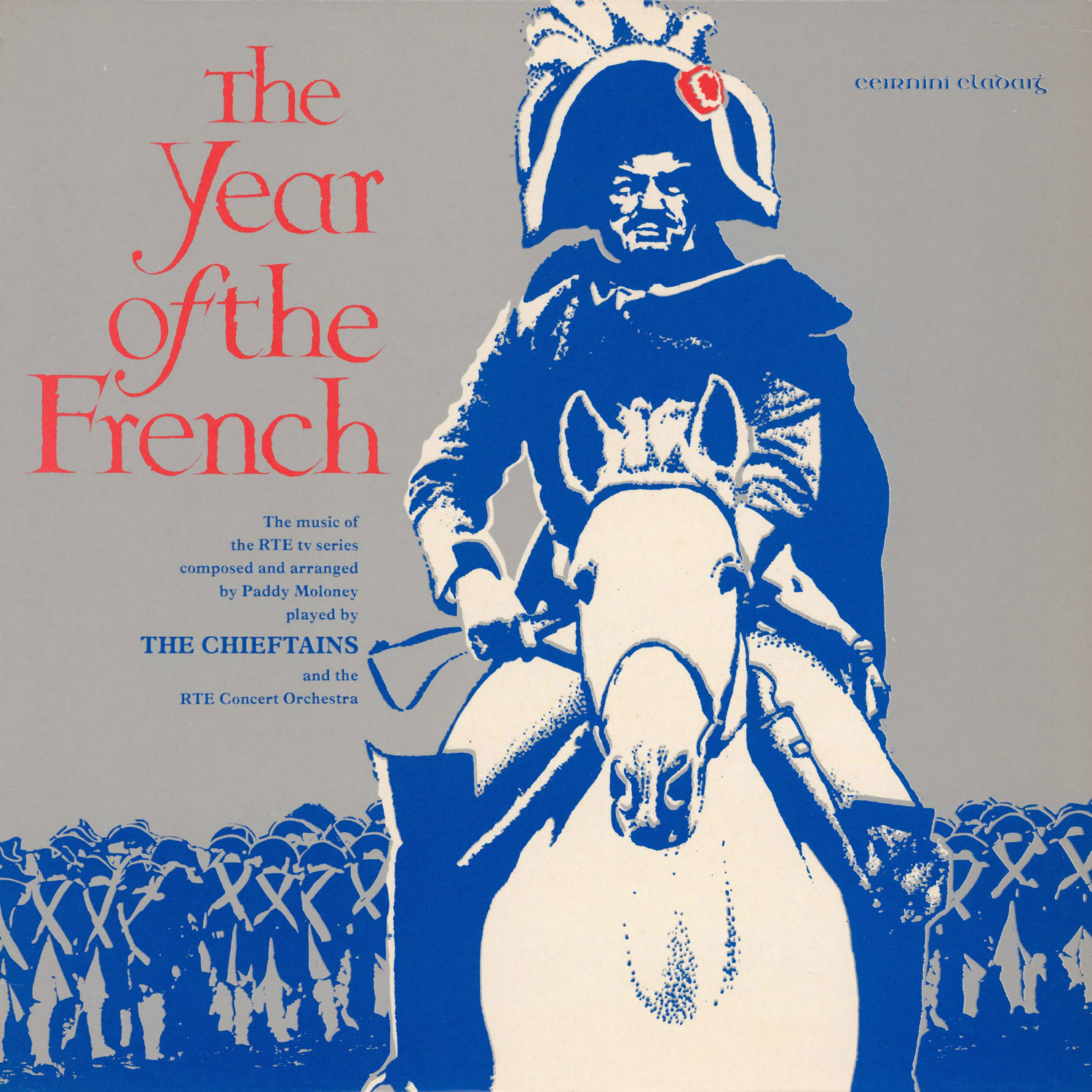


Sleeve Notes
THE CHIEFTAINS and the RTÉ CONCERT ORCHESTRA, have created the music for 'The Year of the French'. But there is a sense in which The Chieftains were already present, in the novel itself.
I tried to make music a part of the book. It is present in the opening description of Western Ireland, by Arthur Broome. "Music and dance," he notes there. "No people on earth, I am persuaded, loves music so well, nor dance." He remembers a harper, "his fingernails kept long and the mysteries of his art hidden in their horny ridges. The music would come to us with the sadness of a lost world, each note a messenger sent wandering among the Waterford goblets. Riding home late at night, past tavern or ale house, I would hear harps and violins, thudding feet rising to frenzy."
It is present in the mountain, Mayo taverns and barns visited by Owen McCarthy, the novel's wandering poet, present in his memories of his Kerry boyhood, present in the kitchens and barns, where he leans against walls watching dancers, present in a song carried across the clear air of a valley. It is present when, later on, McCarthy, in a Carrick prison, awaiting hanging, befriends a musician with a broken fiddle. "Had they escaped from the smashed fiddle," he thinks, holding it in his hand, "battalions and regiments of sound rushing out from the shattered wood? There was magic in a fiddle, it had a life of its own."
Music could scarcely not have been a part of the book for in the Ireland with which it concerns itself, the Ireland of the late eighteen century, those arts of the people which had preserved themselves against ravishment and expropriation were the arts of sound — poetry and music. And the poetry of that time was itself a kind of music.
If, when I was writing the book, there was any kind of actual music echoing in some part of my mind, I am quite certain that it was the music of The Chieftains. What they have accomplished in their art need not be described to an Irish audience. It is music wedded to a landscape, to a land. Within it, the colours, textures, odours of a culture are held, celebrated, released.
The score which Paddy Moloney has created for the RTÉ production of 'The Year of the French' is therefore more than commentary upon the actions or accompaniment to visual images. In a sense, the book was waiting for the Chieftains to join it. The music which we have here is an intimate union, as is always the case with The Chieftains, of the traditional and the contemporary, and the bond between the two is themeless. The main theme, 'Killala', the Marches of the Mayomen and of the French, the Dance tunes, the Lamentations, the Reels, are celebrations both of the Irish past and of the vitality of the Irish present. 'The Year of the French' is a historical novel, and the music which we have here is, in its own way, a dialogue with history. Whenever one hears The Chieftains, whether in concert or in recordings, Ireland seems to be speaking itself, within the ear, and then, quickly, within the imagination. They create landscapes of sound, headland and strands and pastures, bogland and mountain.
Perhaps we may let the novel's Mr. Broome have the last word, at the very end, he reflects upon the Mayo to which he has been banished and to which, finally, he feels himself bound. And music is the word he gives to that bond; "Mayo is its own world, affirming a reality of tree and stone, mountain and river. I hear its music now, as once, when I first came here, I could not. A footfall upon frozen earth, the belling of hounds upon an autumn morning, the cry of a curlew, the scraping of a fiddle, lowing of cattle, voices beneath my window — when sounds, random but familiar fall into place within the mind, they become a music. I would be lonely now without that music".
If you listen carefully to the music that has here been created, you can hear all of that, even the cry of the curlew. And more as well.
THOMAS FLANAGAN